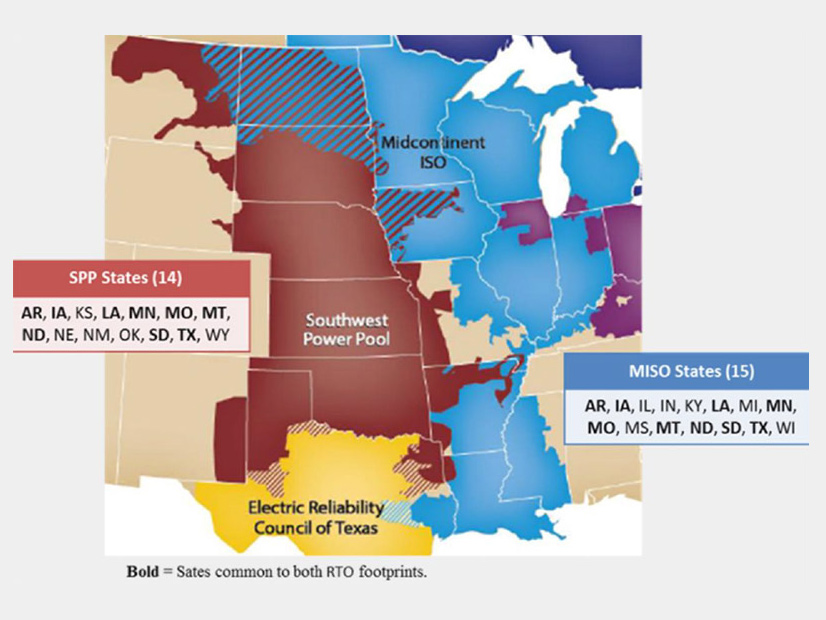MISO and SPP state regulators, eager for the RTOs to address rate pancaking, are trying to find ways to inventory the instances and costs of duplicate transmission charges along their seams.
The MISO-SPP Seams Liaison Committee (SLC), comprised of regulators from the Organization of MISO States (OMS) and SPP’s Regional State Committee (RSC), met virtually last week with their newly formed rate pancaking working group.
American Clean Power Association’s Daniel Hall urged regulators to study pancaked rates’ adverse cost impacts on long-term supply contracts.
“This has real impacts on consumers, on the rates they pay,” he said during the June 4 call.
American Electric Power and other utilities have complained about the transmission service fees involved with serving load on both sides of the RTOs’ borders. Some, like Missouri River Energy Services, a member of both MISO and SPP, have split their power supply in order to avoid paying for SPP transmission service.
Some in the working group suggested that regulators ask MISO and SPP members to quantify their annual pancaking costs through a survey.
Others said researching MISO and PJM’s elimination of rate pancaking years ago could help guide regulators’ recommendations for MISO and SPP.
“I’ll say it was a long process to go through that,” said Missouri Public Service Commission economist Adam McKinnie.
Xcel Energy’s Carolyn Wetterlin pointed out that new flows created from any MISO and SPP interregional projects might also be subjected to pancaking charges. MISO and SPP are pursuing an interregional study that could result in transmission projects to help ease their respective logjams in their generation interconnection queues. (See MISO Axes Remaining SPP Interregional Project.)
The OMS and RSC’s working group is working through how it might collect data on the fees. Regulators promised more information for the SLC’s next meeting July 15.




